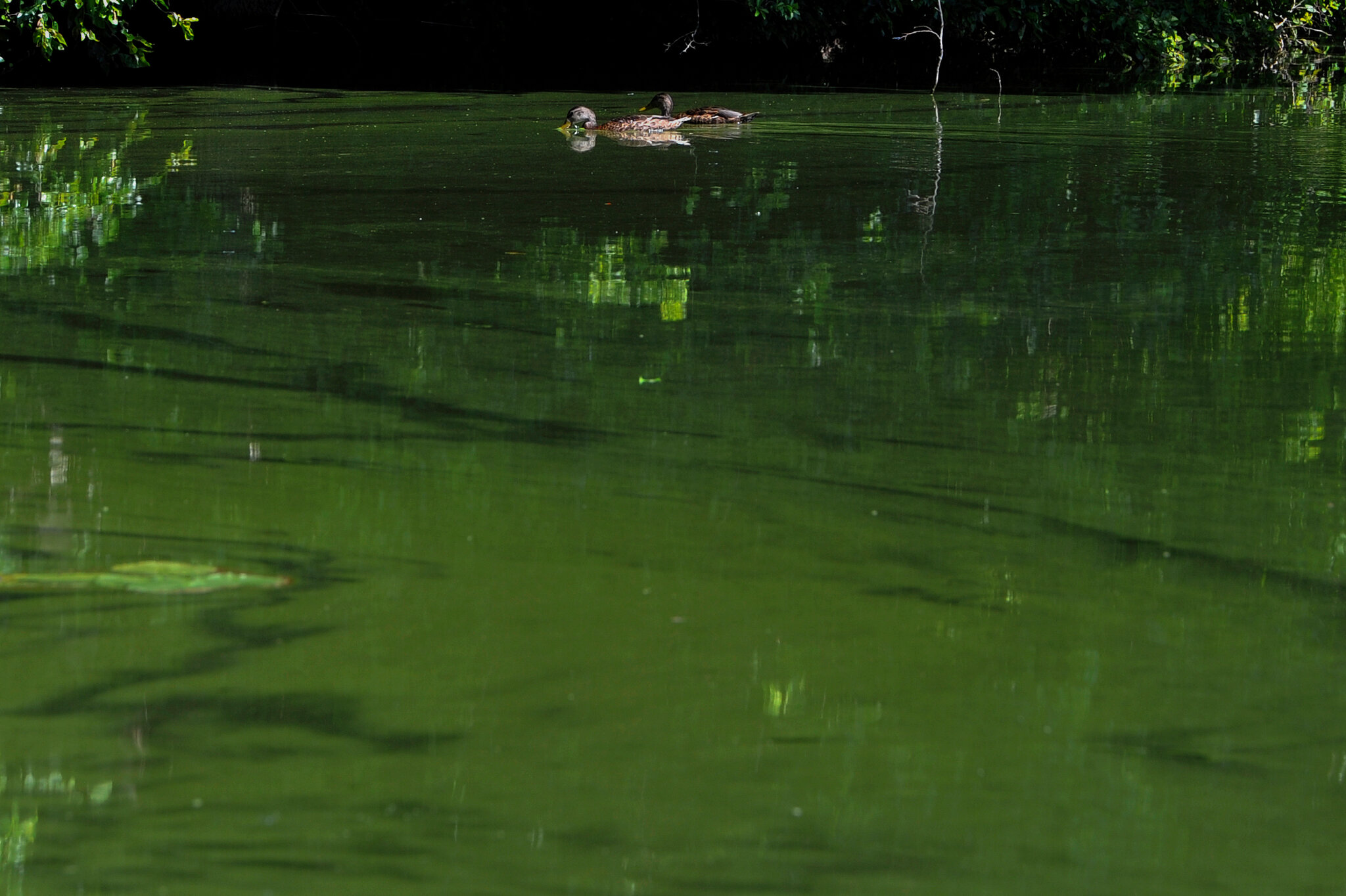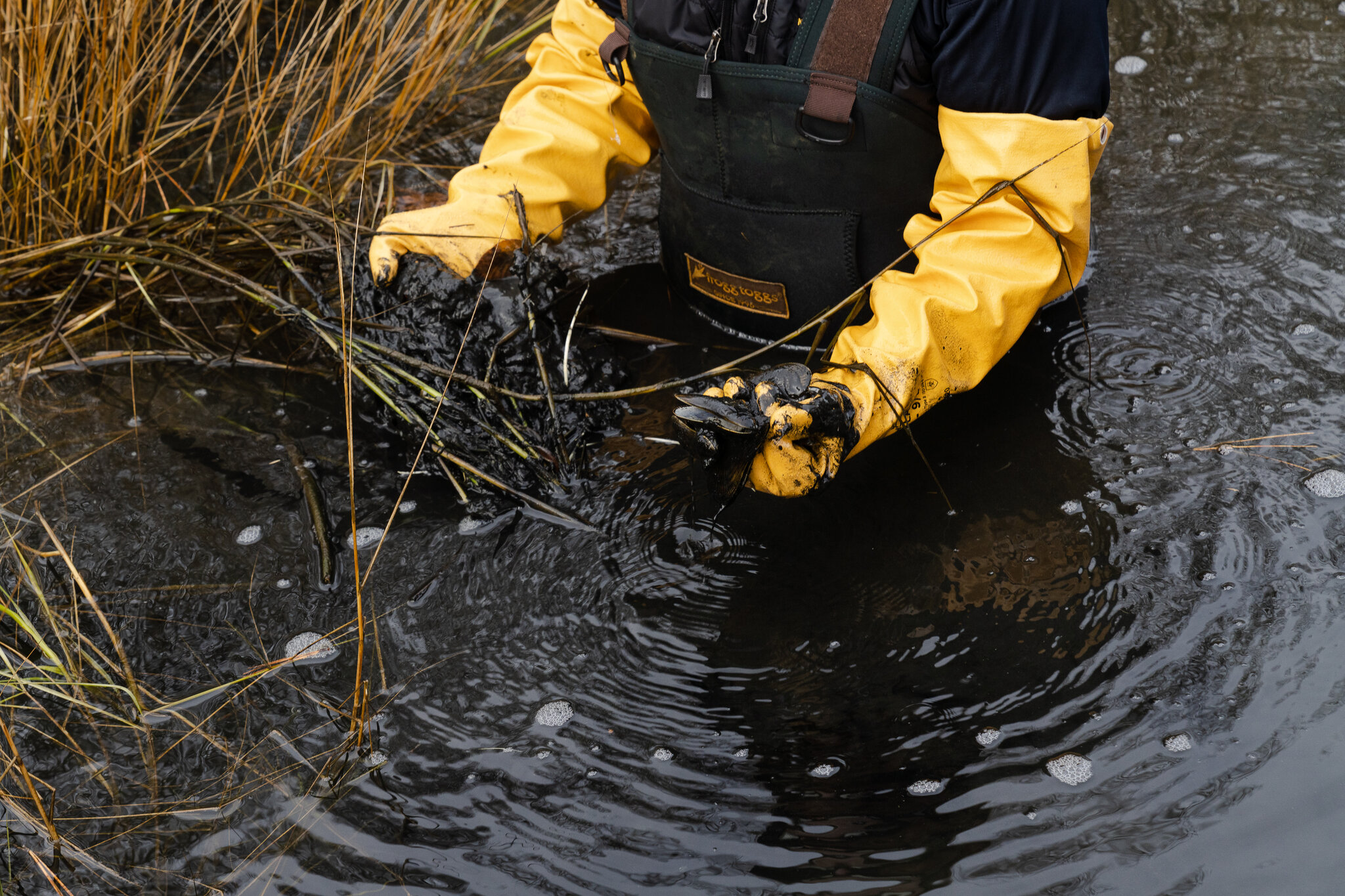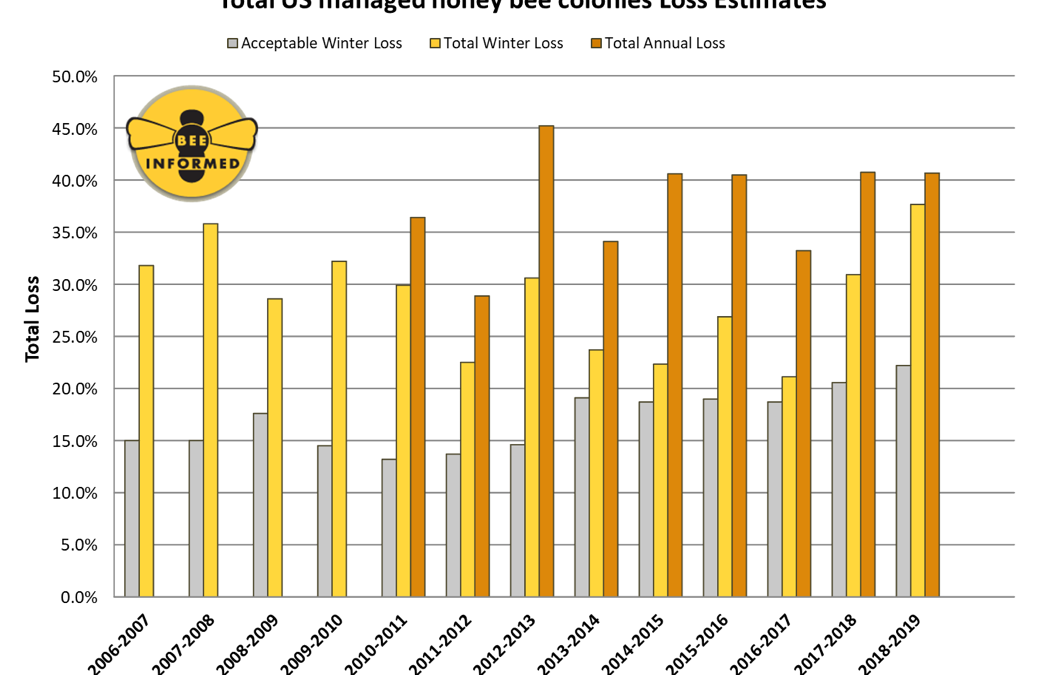A toxic stew on cape cod: Human waste and warming water

By Christopher Flavelle
1 January 2023
MASHPEE, Massachusetts (The New York Times) – Ashley K. Fisher walked to the edge of the boat, pulled on a pair of thick black waders, and jumped into the river to search for the dead.
She soon found them: the encrusted remains of ribbed mussels, choked in gray-black goo that smelled like garbage and felt like mayonnaise. The muck on the bottom of the Mashpee River gets deeper every year, suffocating what grows there. It came up to Ms. Fisher’s waist. She struggled to free herself and climb back aboard.
“I did not think I was going to sink down that far,” said Ms. Fisher, Mashpee’s director of natural resources, laughing. Her officers once had to yank a stranded resident out of the gunk by tying him to a motorboat and opening the throttle.
The muck is what becomes of the poisonous algae that is taking over more of Cape Cod’s rivers and bays each summer.

The algal explosion is fueled by warming waters, combined with rising levels of nitrogen that come from the antiquated septic systems that most of the Cape still uses. A population boom over the past half-century has meant more human waste flushed into toilets, which finds its way into waterways.
More waste also means more phosphorus entering the Cape’s freshwater ponds, where it feeds cyanobacteria, a type of algae that can cause vomiting, diarrhea and liver damage, among other health effects. It can also kill pets.
The result: Expanding aquatic dead zones and shrinking shellfish harvests. The collapse of vegetation like eelgrass, a buffer against worsening storms. In the ponds, water too dangerous to touch. And a smell that Ms. Fisher characterizes, charitably, as “earthy.”
Together, the changes threaten the natural features that define Cape Cod and have made it a cherished destination for generations.

In response, and after several lawsuits filed by environmentalists, Massachusetts has proposed requiring Cape communities to fix the problem within 20 years, through a mix of upgrading the septic tanks used by homes that aren’t connected to city sewer systems, and by building new networks of public sewer lines.
Local officials say the plan would run into the billions of dollars and push housing costs beyond the means of many residents.
“It is physically, financially and logistically impossible for us to meet that standard,” Robert Whritenour, town administrator of Yarmouth, one of the largest towns on the Cape, told state officials during a December public hearing in Hyannis. “It’s simply unfair.”
Massachusetts must now decide whether to move ahead with the mandate, and risk driving some people from their homes, or weaken the proposed rule, and allow the waters of Cape Cod to degrade even further. The decision could be a model, or maybe just a warning, for other coastal communities facing similar predicaments as the climate warms and overwhelms infrastructure built for an earlier age.
“I can barely pay my mortgage,” Paul Haley, a Cape resident who said he lives on a fixed income, told state officials at the Hyannis meeting. “If I have to put in a new septic system, I have to leave.” […]

‘Swimming May Cause Illness!’
The ecological toll of the Cape’s reliance on septic systems is not limited to the shoreline. Cape Cod is dotted with freshwater kettle ponds that were formed by glaciers. One of Mashpee’s largest is Santuit Pond, roughly 170 acres of water surrounded by houses set on hills dotted with beech and scrub pine. In winter, the pond looks pristine, much the way it might have appeared to Henry David Thoreau when he walked the Cape in 1849.
For much of the rest of the year, it is a foul-odored, neurotoxin-laden, electric-green mess.
“Warning! Closed — no swimming. Swimming may cause illness!” reads a metal placard by the boat launch. A nearby sign helpfully instructs how to identify a toxic bloom of cyanobacteria, a type of algae, noting it “can look like foam, scum, mats, or paint on the surface of the water.” [more]


